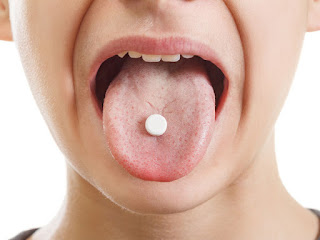Sublingual Drug Delivery System
Sublingual drug delivery system
Sublingual drug delivery of the medication implies the arrangement of the medication under the tongue and drug comes to straightforwardly into the circulation system through the ventral surface of the tongue and floor of the mouth.The fundamental system for the retention of the medication into oral mucosa is by means of latent dissemination into the lipoidal film.
The retention of the medication through the sublingual course is 3 to 10 times more prominent than an oral course and is just surpassed by hypodermic infusion. For these details, the little volume of the spit is generally adequate to bring about a tablet crumbling in the oral cavity.
This course has a few particular points of interest over the enteral and parenteral courses of medication conveyance because of its rich blood supply, quick onset of activity, improved bioavailability, shirking of the principal pass, and sustenance impacts, expanded patient consistency, and simplicity of self-solution. Throughout the years, various items exploiting oral mucosal medication conveyance have been presented in the business sector.
Drugs accessible as sublingual tablets are Isosorbide dinitrate, Nitroglycerin, Fentanyl citrate, Buprenorphine hydrochloride, Ergotamine tartrate, Ergoloid mesylates, Asenapine (Saphris), Buprenorphine hydrochloride and naloxone hydrochloride, Zolpidem tartrate (Intermezzo) and many more drugs.
Any type of substance might be manageable to the sublingual organization on the o chance that it breaks down effectively in spit. Powders and vaporizers may all exploit this technique. In any case, various components, for example, pH, molecular weight, and lipid solubility, may figure out if the course is down to earth.
In view of these properties, an appropriately solvent medication may diffuse too gradually through the mucosa to be powerful. Be that as it may, numerous medications are significantly more strongly taken sublingually, and it is for the most part a more secure option than an organization by means of the nasal mucosa.
This strategy is additionally broadly utilized by individuals regulating certain psychoactive medications. One disadvantage, in any case, is tooth staining and rot brought about by long haul utilization of this technique with acidic or generally burning medications and fillers.
1. Passive diffusion
2. Active or carrier-mediated transport
3. Endocytosis
Factors affecting the sublingual absorption
1. Lipid solubility of the drug2. Saliva pH and pKa
3. Oral epithelium thickness
4. Partition coefficient
Methods of Preparation
The following methods can be used to prepare sublingual tablets1. Direct compression Method
2. Compression molding
3. Freeze-drying
1. Direct compression method
This is a commonly used method for the preparation of sublingual dosage forms and it is a simple and most economical method. The direct compression method is best suitable for heat-labile drugs. In this method we are using direct compressible and soluble ingredients, lubricant and a super disintegrant (for example Crospovidone, Microcrystalline cellulose, etc.), dry binder, sweeteners, and flavors.2. Compression molding
Tablets produced by this method will disintegrate and dissolved rapidly (within 4 to 11 sec). The disadvantage of this method is tablets having poor mechanical strength, to overcome this problem binders are added to the formulation blend.3. Freeze-drying
This is costly and consumes more time compared to direct compression; this method produces tablets of poor mechanical strength. Tablets produced by this method will have high porosity and dissolve instantly. This method is suitable for heat-sensitive drugs.Evaluation Tests
Hardness test
The hardness of the tablets was determined by using Hardness testers like Electro lab hardness tester, Monsanto hardness tester. The tablets should be resistant to breakage under storage conditions.In-vitro dispersion time
This test can be done by taking 50 ml of Phosphate buffer pH 6.8, three tablets were tested from each batch and note the dispersion time.Wetting time
Place the tablet at the center of absorbent paper fitted into a Petri dish, After the paper was completely wetted with refined water, overabundance water was totally depleted out of the dish. The time required for the water to diffuse from the wetted retentive paper all through the entire tablet was then recorded utilizing a stopwatch.Friability
Roche friabilator can be utilized to decide the friability. Check the weight of tablets and place them in friabilator, The tablets were pivoted in the friabilator for no less than 4 minutes. At the end of the test, tablets were cleaned and reweighed, the misfortune in the heaviness of tablets is the measure of friability. Friability is calculated in percentage using the following equation% Friability = Loss in weight × 100/Initial weight

























